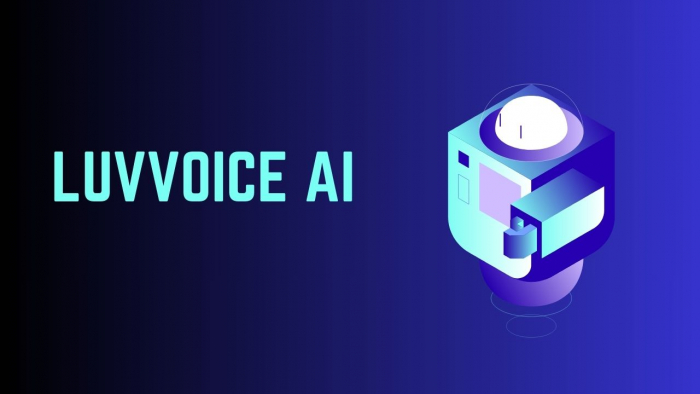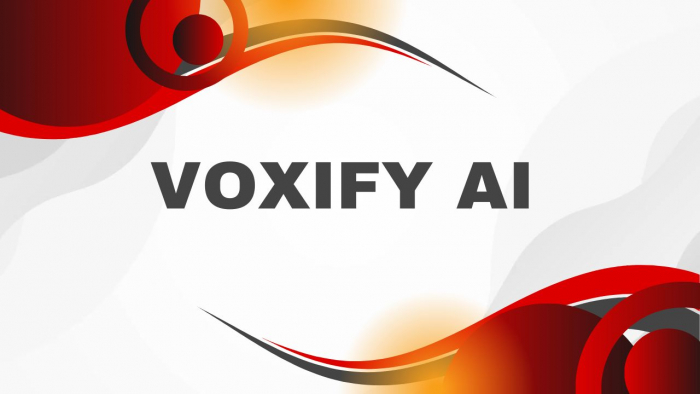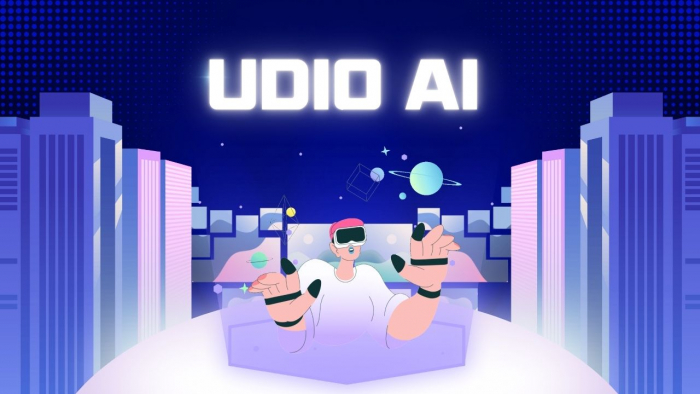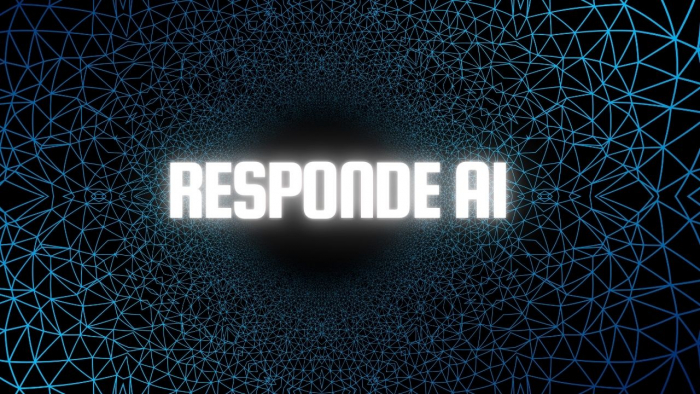Table of Content
- The Evolution of Music Creation with Udio AI
- Modern Generative Audio: What’s Happening Behind the Scenes
- Breaking Down Udio’s Text-to-Music Engine
- Inside Udio’s Deep Learning Pipeline: From Prompt to Sound
- Udio AI vs Traditional DAWs: The Workflow Revolution
- Udio’s Core Capabilities: What Makes It Stand Out
- Hands-On Feature Walkthrough: Prompting, Editing & Remixing
- Benchmarking Udio Against Suno, Stable Audio & Others
- User Feedback: Praise, Complaints & Community Opinions
- Commercial & Creative Use Cases Where Udio Shines
- Udio’s Strengths, Weaknesses & Limitations
- The Evolution Timeline: Udio AI (2024–2026)
- Most Asked Questions About Udio AI
- FINAL THOUGHTS: Udio’s Impact on the Future of Music
AI music is no longer an experiment, it’s a full creative revolution. And at the center of this shift stands Udio AI, a tool capable of turning plain English descriptions into fully structured, emotionally convincing songs. Not just instrumentals, but entire tracks with lyrics, verses, choruses, harmonies, and realistic AI vocals.
Creators who once struggled with instruments, production, or studio access can now build entire songs as easily as writing messages on ChatGPT. Brands that used to pay thousands for jingles now test ideas in minutes. Indie musicians now produce demos daily.
Udio is changing not just the speed of production, but the accessibility of creativity itself.
The Evolution of Music Creation with Udio AI
Music creation used to be a vertical, gated discipline. Only people with:
- Studio access
- Musical background
- Vocal talent
- Expensive equipment
- Time for revisions
could participate meaningfully.
Udio breaks this hierarchy
It allows:
- Non-musicians to express musical ideas
- Marketers to create brand-specific jingles
- YouTubers to craft intros
- Indie artists to prototype demos
- Short-form creators to match viral trends instantly
- Agencies to rapidly test sonic directions
This democratization mirrors what Canva did for design and what ChatGPT did for writing.
But unlike many AI tools, Udio doesn’t just generate generic loops, it creates songs that feel intentionally structured, with dynamics, emotional movements, and distinct sections. This emotional believability is why users feel the tool is “alive.”
Modern Generative Audio: What’s Happening Behind the Scenes
Udio’s foundation sits on large-scale audio models trained using:
- Multi-decade musical catalogs
- Diverse vocal styles
- Modern and vintage production techniques
- Cross-genre instrumentation
- Lyrical and poetic structures
- Emotional and cultural nuances
These models are capable of:
- Reading your prompt
- Predicting musical patterns
- Generating chord progressions
- Creating rhythmic grooves
- Writing lyrics based on emotional keywords
- Synthesizing expressive vocals
- Balancing and mastering the final product
These are not stitched-together samples, they are AI predictions of what music should sound like based on statistical relationships learned from millions of audio patterns.
This gives Udio the ability to:
- Understand metaphors in prompts
- Recreate vibes like “sad girl indie pop vibes”
- Mimic genre-specific production layers
- Distinguish between “soft rock” and “hard rock”
- Adjust the emotional inflection of vocals
This is not just AI imitating music—it’s music composed through AI cognition.
Breaking Down Udio’s Text-to-Music Engine
Udio’s text-to-music system is built around a hyper-detailed semantic interpreter. It reads your prompt like a story, extracting:
Musical Intent
Words like “cinematic,” “sad,” “energetic,” “chill,” “dark” influence tempo, scale, and rhythm.
Vocal Character
“Warm female vocals,” “raspy male voice,” “child-like choir” help shape vocal timbre.
Emotional & Lyrical Themes
“Heartbreak,” “nostalgia,” “revenge,” “uplifting,” produce matching lyrical motifs.
Instrumentation
“Acoustic,” “orchestral,” “EDM,” “jazzy,” generate genre-specific arrangements.
Mixing Style
“Lo-fi,” “studio clean,” “radio-ready” impact reverb, compression, equalizing.
Structural Layout
AI automatically formats into:
- Verse → Chorus → Verse
- Bridge sections
- Hooks
- Harmonies
This means Udio doesn't just generate sound, it creates song architecture.
Inside Udio’s Deep Learning Pipeline: From Prompt to Sound
Below is a more comprehensive breakdown of Udio’s pipeline, with deeper insight:
STEP 1 — Prompt Parsing & Emotion Extraction
The model identifies genre keywords, emotional cues, lyrical sentiment, and stylistic boundaries.
Examples:
“Dreamy” = Breathy vocals + soft pads
“Cinematic” = String crescendos + wide stereo field
“Rage” = Distorted vocals + heavy drums
STEP 2 — Lyric Development
Udio builds lyrics around narrative arcs:
Hook → emotional peak
Verse → introspective tone
Chorus → repetition for relatability
It ensures lyrical meter matches melodic structure.
STEP 3 — Vocal Synthesis & Emotion Modeling
Udio’s vocals feature:
- Natural breathing
- Pitch glides
- Grain texture
- Emotional emphasis
- Human-like phrasing
No other AI generator (not even Suno) captures this expressive nuance.
STEP 4 — Instrument Arrangement
Each genre has “genre DNA,” and Udio knows these patterns:
Jazz → 7th chords + brush drums
Indie → reverb guitars + soft kicks
Pop → layered synths + punchy vocals
The AI layers:
- Percussion
- Bassline
- Harmony
- Melodic motifs
- Effects
STEP 5 — Mixing and Mastering
Final export includes:
- EQ
- Multi-band compression
- Stereo widening
- Peak limiting
- Reverb + ambience
Tracks sound like professionally mixed demos.
STEP 6 — Regeneration & Inpainting
Unique feature:
You can regenerate ONLY the chorus, ONLY the verse, or ONLY the bridge.
This aligns Udio closer to a real music studio:
refining sections instead of regenerating entire tracks.
Udio AI vs Traditional DAWs: The Workflow Revolution
Udio Advantages :
- No studio required
- No instruments needed
- No musicians needed
- No mixing skill required
- Ultra-fast iteration
- Perfect for ads, trends, memes, drafts
- Accessible for people with disabilities or no musical training
- Works cross-device
This accessibility doesn’t dumb down creativity,
It supercharges it.
DAW Advantages:
Professional producers still prefer DAWs for:
- Full control over stems
- Exact tweaking
- Real-time recording
- Live instruments
- Complex arrangements
- Sound design
- Multi-track mixing
So Udio isn’t replacing DAWs—
It’s replacing creative friction.
Udio’s Core Capabilities: What Makes It Stand Out
Let’s enter deeper into each feature:
- Ultra-Realistic Vocals
- Udio models capture:
- Vibrato
- Whispering tones
- Belting techniques
- Emotion-driven phrasing
- Genre-specific vocal color
- Vocals feel “alive,” not robotic.
Lyric Intelligence
Udio’s lyric engine understands:
- Narrative arcs
- Emotional storytelling
- Rhyme schemes
- Repetition for hooks
- Poetic structure
Lyrics flow naturally, even across multiple remixes.
Audio Inpainting (Industry-First)
You can:
- Replace the chorus
- Fix a weak line
- Change a verse style
- Remove a section
- Rebuild a melody
This editing precision makes Udio feel half-AI, half-DAW.
Multilingual Generation
English is strongest, but it also supports:
- Japanese
- Portuguese
- German
- Spanish
- Tagalog
- Italian
Lyrics depend on language training depth.
Remix Engine
Switch:
- Mood
- Vocal tone
- Genre
- Tempo
- Arrangement
Your “pop ballad” can become an “EDM remix” instantly.
Cross Platform Use
iOS app brings portable creativity:
commuting → creating music
lunch break → fixing a chorus
traveling → sketching song ideas
Hands-On Feature Walkthrough: Prompting, Editing & Remixing
A fully detailed user flow:
1. Prompt Entry
You describe the song's feel, emotion, voice type, genre, and storytelling.
2. Dual Track Generation
Udio gives two versions instantly, allowing A/B selection.
3. Lyric Editing Panel
Tune the storyline, fix metaphors, adjust line rhyming.
4. Vocal Character Tweaks
Modify voice gender, energy, tone, and intensity.
5. Inpainting for Micro-Editing
Replace only lines or melodic phrases without touching the rest.
6. Remixing
Shift genres (Pop → Rock → EDM → Trap → Folk).
7. Track Extending
Build longer narratives using "extend" features.
8. Exporting
Download in high-quality and upload anywhere.
Benchmarking Udio Against Suno, Stable Audio & Others
The AI music landscape is crowded with tools promising instant creativity, but Udio, Suno, and Stable Audio are the three dominant platforms shaping the 2025 ecosystem. To understand Udio’s place, we need a true, data-backed comparison grounded in performance metrics, user feedback, fidelity tests, and creative flexibility.
Vocal Quality (Most Important Metric)
Udio AI clearly leads here. Its vocals are:
- More emotionally expressive
- Better at matching lyrical phrasing
- More lifelike with pitch glides, breaths, vibrato
- Capable of subtle dynamic shifts (e.g., breathy → powerful)
- Able to emulate genre-specific vocal delivery
Suno’s vocals are solid but noticeably more synthetic or “flat” in intense emotional moments.
Stable Audio does not offer vocals.
Result:
Udio wins, especially for creators needing full songs, artists drafting demos, or brands wanting natural-sounding voices.
Lyric Generation & Narrative Coherence
Udio generates lyrics that feel:
- Purposeful
- Thematically cohesive
- Emotionally aligned
- Human-written
- Structurally formatted
Meanwhile:
Suno produces catchy but cliché lines.
Stable Audio produces no lyrics.
Result:
Udio dominates lyrical intelligence and storytelling.
Song Structure & Arrangement
Udio naturally builds:
- Verse → Chorus → Verse
- Bridges
- Harmonies
- Backing vocals
- Dynamic rises and falls
Suno’s structure tends to be repetitive, while Stable Audio excels in instrumentals but has limited structural diversity.
Result:
Udio = Best for full songs
Stable Audio = Best for cinematic instrumentals
Audio Fidelity
Stable Audio: Highest raw fidelity (24/48kHz), ideal for sound design or film scoring.
Udio: Very high quality (24-bit), polished for mainstream or commercial use.
Suno: Good, but occasionally compressed.
Result:
Stable Audio leads technically, but Udio offers the most balanced realism.
Editing Power (Inpainting, Remixes, Variations)
Udio’s audio inpainting is a genuine breakthrough:
- Regenerate only a chorus
- Rewrite specific lyrical lines
- Replace vocal performance
- Rebuild only the bridge
- Add harmonies to existing vocal lines
Neither Suno nor Stable Audio offers this at Udio’s depth.
Result:
Udio is the only AI music tool that behaves like a hybrid DAW-AI editor.
Song Duration
Suno: Up to 4 minutes (longest in the industry)
Udio: 30 seconds to 2 minutes
Stable Audio: ~95 seconds instrumental
Result:
Suno wins on length, Udio wins on quality.
Genre Flexibility
Udio can handle:
- Pop
- R&B
- Acoustic
- Indie
- Electro-pop
- Soft rock
- Piano ballads
- Ambient
Suno covers a broader meme/trend range.
Stable Audio is ideal for cinematic textures or atmosphere.
Udio for songs, Stable for soundscapes, Suno for meme/trend music.
User Feedback: Praise, Complaints & Community Opinions

The most accurate understanding of Udio comes from thousands of creators who use it daily across Reddit, Trustpilot, X, and private musician communities.
Here’s a full sentiment breakdown:
Positive Feedback Trends
1. “The vocals sound unbelievably real.”
Users frequently say Udio is the first AI that feels human.
2. “Songwriting is cohesive, emotional, and not gibberish.”
Lyrics follow consistent themes and moods.
3. “Perfect for demo recording and songwriting practice.”
Musicians use it as a sketchbook before studio sessions.
4. “Commercial-ready sound for ads and campaigns.”
Marketing agencies love the production quality.
5. “Audio inpainting is a game changer.”
Being able to fix specific sections is a huge advantage.
Mixed Reactions
1. Track length limitations
Many want full 3–4-minute songs (coming soon).
2. Genre ceiling
Some niche genres (death metal, jazz fusion) feel less precise.
3. Prompt sensitivity
Small changes in the prompt sometimes cause drastic style differences.
4. Learning curve for advanced use
Basic prompting is easy; mastering Udio’s nuances takes time.
Negative Feedback Trends
1. Legal uncertainty
Users worry about copyright lawsuits in the AI music space.
2. Occasionally repetitive chord progressions
Some songs share similar harmonic DNA.
3. Non-English output isn’t always perfect
Melodic alignment sometimes mismatches lyrics.
4. Emotion mismatch
Once in a while, the vocal feels too cheerful for sad lyrics or vice versa.
Overall Sentiment:
Udio is loved for realism and creative power—but users want longer tracks, clearer copyright guidelines, and expanded genres.
Commercial & Creative Use Cases Where Udio Shines
The versatility of Udio is what’s pushing it into mainstream adoption. Here’s how different industries use it:
For Short-Form Creators (TikTok/Reels/YouTube Shorts)
Udio is perfect for:
- Background music for trends
- Soundtracks for skits and vlogs
- Original meme audio
- POV/editable sounds
- Emotional storytelling clips
Creators no longer rely on copyrighted songs or generic libraries.
For Marketers & Brands
Udio helps brands create:
- Custom jingles
- Catchy product launch music
- Emotional soundtrack for brand storytelling
- Advertisements tailored to audience mood
- TikTok ad tracks matching viral vibes
This dramatically cuts music licensing costs.
For Podcasters
Podcasters use Udio to generate:
- Opening intros
- Segment transitions
- Outro music
- Character themes
- Ambient background layers
Everything can be regenerated until it fits the tone perfectly.
For Filmmakers & Indie Creators
Udio is used for:
- Demo scoring
- Scene mood exploration
- Emotional montages
- Character theme songs
Filmmakers experiment with multiple moods before purchasing commercial tracks.
For Songwriters & Musicians
Udio acts as a:
- Melody generator
- Lyrical brainstorming partner
- Demo tool
- Inspiration machine
- “Writer’s block killer”
Musicians refine Udio songs later in DAWs—Udio becomes the idea engi.
Udio’s Strengths, Weaknesses & Limitations
Let’s look deeper:
Strengths
1. Most realistic vocals in the AI industry
Captures breath, tone, rasp, vibrato, emotion.
2. Best lyric + melody pairing
Lyrics align properly with phrasing, which is rare.
3. Industry-first editing control
Inpainting gives DAW-like control.
4. Ideal for content creators & brands
Polished mixes require no post-editing.
5. Smooth UX & mobile app support
Fast, delightful, and intuitive.
Weaknesses
1. Shorter maximum song length
Creators want 3–4 minute tracks.
2. Genre accuracy varies
Perfect for pop and indie; weaker for metal/jazz hybrids.
3. Dataset transparency concerns
Legal issues could impact commercial usage.
4. Occasional melodic repetition
Some songs feel harmonically similar.
Summary
Udio shines in creativity, polish, and human-like vocals.
But creators want more freedom, clearer rights, and expanded capabilities.
The Evolution Timeline: Udio AI (2024–2026)
Here’s the ultra-detailed version:
2024
- Udio Beta launches
- AI-generated music becomes mainstream
- Basic vocals + lyrics introduced
- Early hype in the creator community
Early 2025
- Audio inpainting added
- Vocal realism improved significantly
- Genre-emotion alignment upgraded
Mid 2025
- iOS app released
- Udio integrates with Tad.ai for enhanced prompting
- Remix engine expanded
Late 2025 (Projected)
- Track extension to 3+ minutes
- Stem export experiments
2026 (Expected)
- Full-length commercial tracks
- Fully licensed training datasets
- Industry-standard AI–DAW hybrid workflows
Most Asked Questions About Udio AI
Is Udio AI free?
Yes, but generation limits apply.
Does Udio use copyrighted training music?
Not publicly confirmed.
Can Udio replace musicians?
No—musicians still create the heart; AI accelerates the process.
.Are Udio vocals truly realistic?
Yes—arguably the most lifelike in AI music.
Can Udio generate songs in Hindi, Arabic, Korean?
Partial support; improvements expected.
FINAL THOUGHTS: Udio’s Impact on the Future of Music
Udio is more than a music generator—it’s a creative multiplier. It doesn’t kill musicianship; it democratizes it. It doesn’t eliminate producers; it empowers them. It doesn’t replace human emotion; it amplifies it.
The future of music isn’t about human vs AI.
It’s about human creativity enhanced by AI capability.
Udio is building that future today.
Post Comment
Be the first to post comment!




